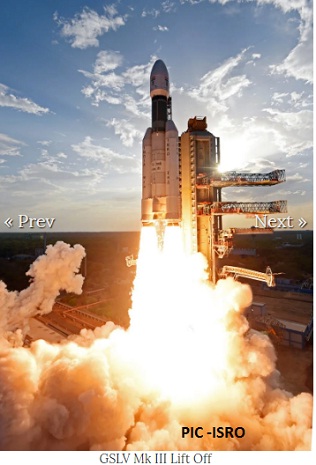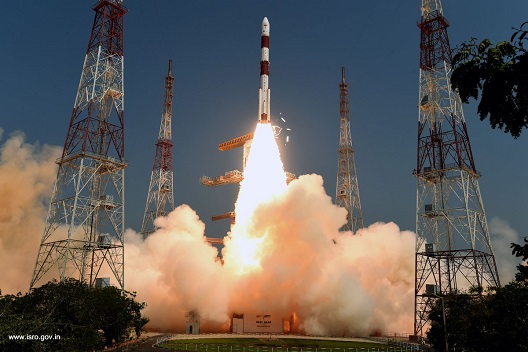Last Updated on August 23, 2024 8:16 pm by INDIAN AWAAZ
By Pooja Mishra
India is celebrating its first-ever National Space Day today (Friday) on the theme “Touching Lives While Touching the Moon: India’s Space Saga”. On 23 August 2023, India achieved a historic milestone when the Chandrayaan-3 lander completed a soft landing on the moon. This remarkable accomplishment made India the 4th country to accomplish this feat and the 1st to land on the lunar South Pole. In recognition of this achievement, Prime Minister Narendra Modi has declared August 23 as National Space Day.
The space sector is one of the most rapidly growing sectors worldwide. In 2022, the global space economy was valued at around US$ 546 billion and is expected to reach US$ 1 trillion by 2040. With the ever-expanding space sector globally, Indian space programs are also expected to reach new heights. In 2021, the Indian space industry contributed 2% to the global share; this is expected to rise to 8% by 2030 and further to 15% by 2047. As India celebrates its maiden National Space Day on August 23, 2024, it becomes even more pertinent to address its international reach.
From Humble Beginnings to Dominating the Global Space Sector
India boasts one of the oldest and most advanced space programs, encompassing a broad spectrum of space activities and capabilities. This has positioned the country as an emerging major space power in the current global space landscape and the leading space actor in South Asia. From 1962, when INSCOPAR (the Indian National Committee for Space Research) was established, it took six years to transform into the now-known ISRO (Indian Space Research Organisation). In 1963, the first Nike Apache Class rocket was launched from India. This launch was, in itself, an international collaborative mission. The US provided two rockets, France supplied the sodium vapor payload, and the Soviet Union arranged for the Mi-4 helicopter for range clearance. This mission set India’s foot in the sky and allowed it to carve its wings to fly higher.
The much-renowned Aryabhata was launched in 1975 and was India’s first satellite—a “Made in India” launch that used a Kosmos-3M launch vehicle from Kapustin Yar in the Soviet Union. On that day, India became the world’s 11th nation to send a satellite into orbit. The historic launch was celebrated by the Reserve Bank of India, and the satellite’s image was printed on the Rs 2 rupee note, which remained in circulation between 1976 and 1997. Now, as India celebrates its maiden National Space Day, more than 430 foreign satellites have been launched by ISRO.
India has set multiple records in the space sector. With the landing of Chandrayaan-3 in 2023, India became the first to land in the lunar south pole region. It was in recognition of this achievement that Prime Minister Narendra Modi announced that August 23, the day India landed on the moon, would be designated as National Space Day. Additionally, ISRO’s remarkable feat includes launching 104 satellites, including 101 foreign ones, into Earth’s lower orbit from the spaceport of Sriharikota in February 2017. This set a record for the most satellites launched in one go. Mangalyaan was the first mission to reach Mars in the first attempt, and Chandrayaan-1 was the first mission to discover water on the moon. These achievements are only a few of many and reiterate India’s potential.
GSAT-9: A Gift from India to South Asian Countries
A notable achievement in India’s space diplomacy was the launch of the “South Asia Satellite” (GSAT-9) in May 2017. This geosynchronous communications satellite was designed to provide a range of services to the region, including telecommunications, broadcasting, telemedicine, tele-education, and disaster management support. Initially proposed by Prime Minister Narendra Modi in June 2014, the satellite was envisioned as “a gift from India” for the member countries of the South Asian Association for Regional Cooperation (SAARC) [except Pakistan]. The South Asian countries—Afghanistan, Bangladesh, Bhutan, Nepal, the Maldives, and Sri Lanka—welcomed India’s initiative. Following the satellite launch, the leaders of the participating countries held a video conference to celebrate the project, recognizing it as a significant milestone in advancing regional integration and cooperation.
What Makes ISRO a Global Favourite?
The cost-effectiveness of ISRO’s missions is widely noted. For instance, the Mangalyaan and Chandrayaan missions were achieved on shoestring budgets of $73 million and $75 million, respectively, less than the costs of Hollywood science fiction blockbusters Gravity ($100 million) and The Martian ($108 million).
Additionally, reliability stems from its proven track record. ISRO has consistently delivered successful missions, including complex ones like Chandrayaan-1, Mangalyaan, and the recent Chandrayaan-3. This reliability enhances its global reputation. ISRO has developed much of its technology in-house, leading to innovations like the Polar Satellite Launch Vehicle (PSLV) and the Geosynchronous Satellite Launch Vehicle (GSLV), which have garnered global acclaim and recognition.
Currently, India has around 300 space start-ups, and more than 1000 crore INR have been invested in the space sector by private partners. The government has also boosted the sector with a 142% increase in the space budget over the last nine years, making the Indian space sector an attractive destination and a key player.

Space Diplomacy: The Need and India’s Position
Space diplomacy fosters international collaboration to harness space resources, making it a common goal across countries. In this context, India’s space diplomacy has evolved significantly. It has successfully created a commercial pathway for the private space industry while also collaborating with international partners, making it one of the most trusted international actors in the space domain.
The collaborative efforts and international reach of Indian space programs have been highly diverse. With the USA, ISRO collaborated on the NISAR mission and joined the Artemis Accords in 2023, aiming for successful manned moon missions by 2025. India also collaborates with ESA, the European Space Agency, on the SARAL oceanographic satellite and the ExoMars rover mission.
With Japan, collaborations include work on a range of satellites for communication, observation, and astronomy. JAXA, the Japan Aerospace Exploration Agency, uses ISRO’s navigation technology to enhance spacecraft autonomy for interplanetary missions. ISRO and CNES, France, have collaborated on several projects for more than six decades, including the Cartosat-2 series of Earth observation satellites. India has also worked with Russia on Gaganyaan astronaut training.
By engaging in partnerships with countries like the USA, ESA, Japan, and France, India leverages its space capabilities for mutual benefits and fosters technological advancements. This cooperation facilitates access to cutting-edge technologies, strengthens its commercial space sector, and promotes regional influence. Additionally, space diplomacy supports India’s strategic goals, contributes to global space exploration efforts, and highlights its commitment to emerging as a leader in space research and innovation. (DD India)

